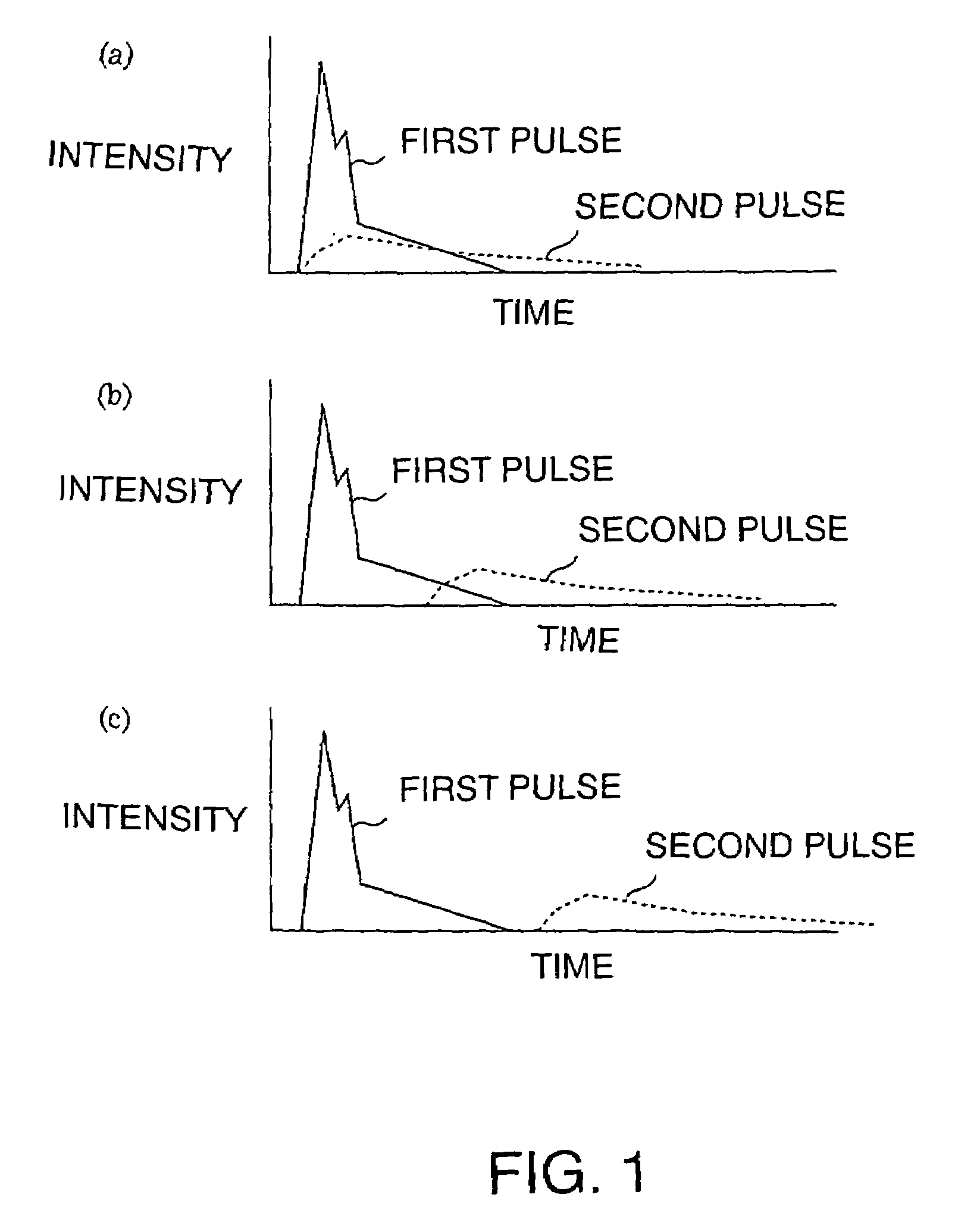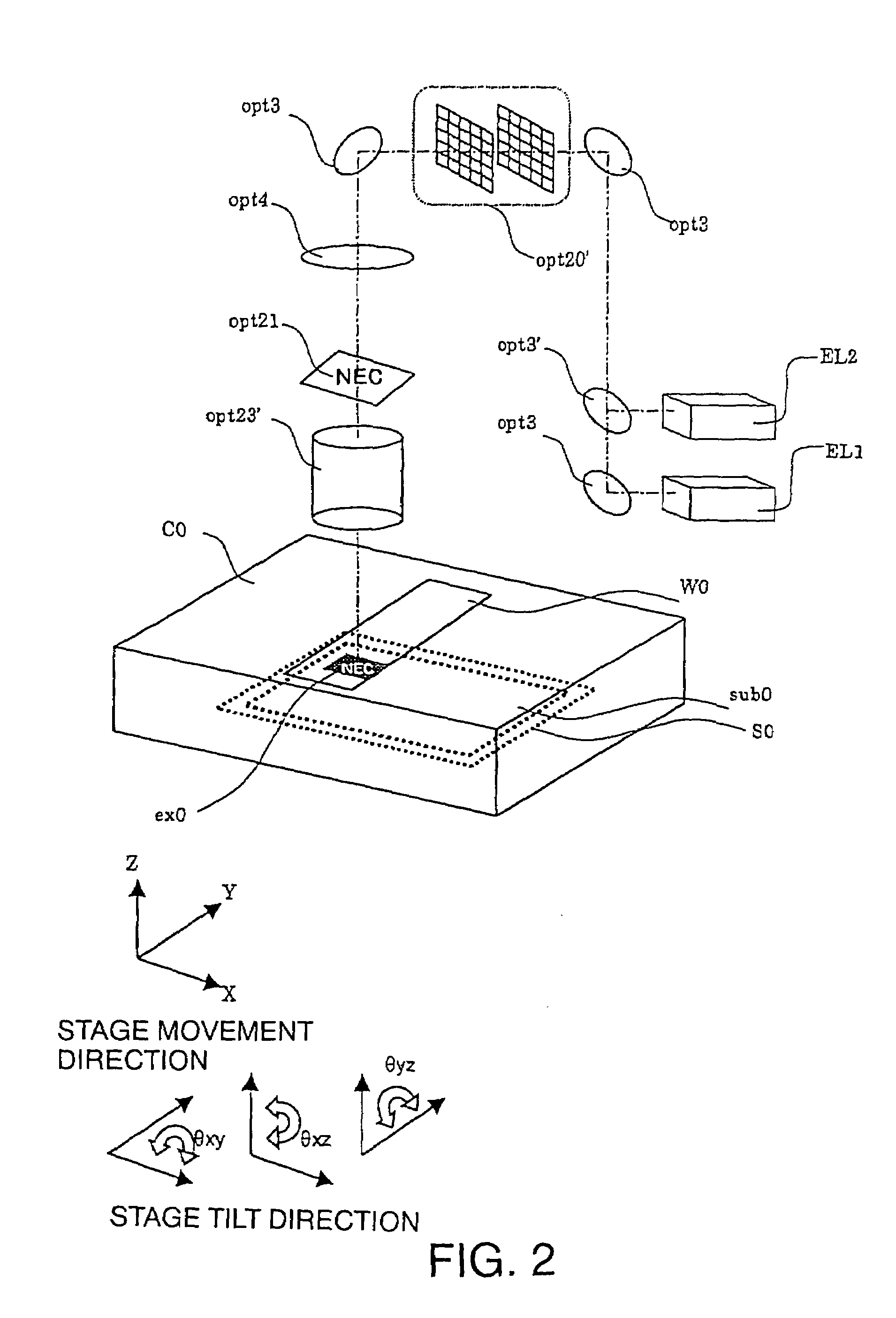Thin film processing method and thin film processing apparatus including controlling the cooling rate to control the crystal sizes
- Summary
- Abstract
- Description
- Claims
- Application Information
AI Technical Summary
Benefits of technology
Problems solved by technology
Method used
Image
Examples
Embodiment Construction
[0068]The embodiments of the invention will now be illustrated in detail with reference to the drawings.
[0069]FIG. 1 illustrates an example of the embodiment of the present invention. Each of the oscillation start timings is depicted on the abscissa axis while the irradiation energy is depicted as the region bound by the pulse line. FIG. 1(a) shows an example where a first pulse laser and a second pulse laser are oscillated at the simultaneous timing. The time interval required between the supply of the trigger signal for controlling the oscillation and the actual start of the oscillation often depends upon the construction of the laser apparatus. Therefore, the “trigger oscillation” time is predetermined so that the irradiation can be simultaneously carried out. Since the emission time of the second pulse is longer than that of the first pulse, the gradual-cooling effect becomes higher during the melting and solidifying process. Moreover, during the melting process by the first pul...
PUM
 Login to View More
Login to View More Abstract
Description
Claims
Application Information
 Login to View More
Login to View More - R&D
- Intellectual Property
- Life Sciences
- Materials
- Tech Scout
- Unparalleled Data Quality
- Higher Quality Content
- 60% Fewer Hallucinations
Browse by: Latest US Patents, China's latest patents, Technical Efficacy Thesaurus, Application Domain, Technology Topic, Popular Technical Reports.
© 2025 PatSnap. All rights reserved.Legal|Privacy policy|Modern Slavery Act Transparency Statement|Sitemap|About US| Contact US: help@patsnap.com



